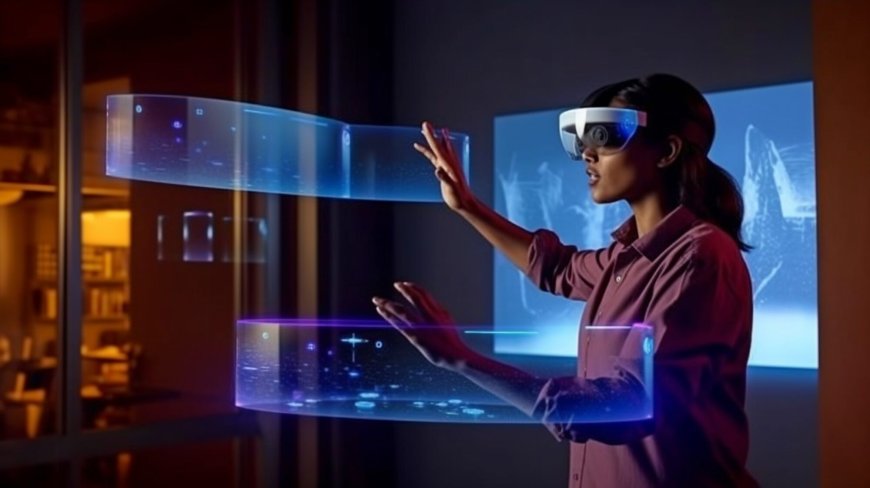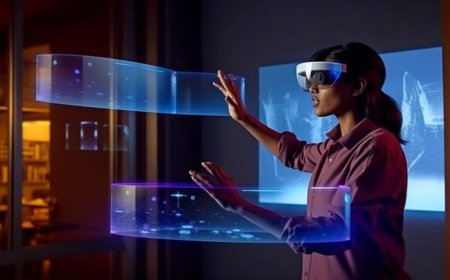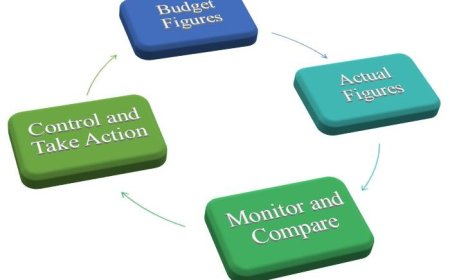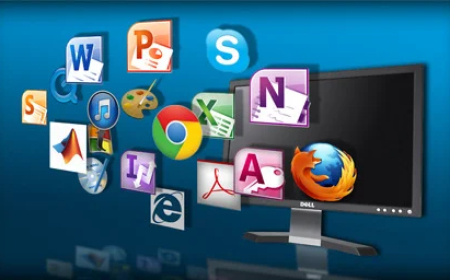Augmented Reality
Augmented Reality: An Overview of Emerging Technology, What is Augmented Reality?, Applications of Augmented Reality, Augmented Reality in Gaming, Augmented Reality in Education, Augmented Reality in Retail, Augmented Reality in Healthcare, Benefits of Augmented Reality, Current Trends in Augmented Reality, How Augmented Reality Works, Getting Started with Augmented Reality Experiences

Introduction
Augmented Reality (AR) is rapidly emerging as one of the most innovative technologies of the 21st century, revolutionizing the way humans interact with digital information and their surroundings. Defined as the integration of digital information with the user’s environment in real time, AR enhances the real world through computer-generated perceptual information. By overlaying digital images, sounds, and other sensory stimuli onto the physical world, AR creates immersive experiences that blur the lines between reality and virtual spaces. With applications spanning entertainment, education, healthcare, and beyond, AR is not just a technological curiosity; it represents a significant shift in how we engage with and interpret our environment.
As AR technology continues to evolve, its potential to transform various sectors becomes increasingly apparent. In the realm of education, for instance, AR can facilitate interactive learning experiences that make complex subjects more accessible. Imagine students exploring the intricacies of the human anatomy through a 3D model that they can manipulate and examine from all angles, or history lessons that come alive with holographic reenactments of significant events. Such applications not only enhance comprehension but also foster a deeper emotional connection to the material, making learning both engaging and memorable.
In healthcare, AR is poised to revolutionize surgical procedures and patient care. Surgeons can utilize AR to visualize critical information, such as patient anatomy and vital statistics, superimposed directly onto their field of view during operations. This capability not only increases precision but also reduces the risk of complications, ultimately leading to better patient outcomes. Furthermore, AR can assist in patient education, allowing individuals to visualize their medical conditions and treatment options in a more comprehensible manner.
The entertainment industry is also experiencing a renaissance thanks to AR. From interactive gaming experiences that blend the digital and physical worlds to immersive storytelling that draws viewers into narratives, AR is transforming how we consume and engage with content. Museums and cultural institutions are leveraging AR to enhance visitor experiences, providing additional layers of information and interactivity that enrich the understanding of exhibits.
As we look to the future, the integration of AR into our daily lives is likely to deepen. With advancements in hardware, software, and user interface design, the barriers that currently limit AR adoption will continue to diminish. This technology holds the promise of creating a more connected and informed society, where digital information is seamlessly woven into the fabric of our everyday experiences. As we embrace this shift, it is essential to consider the ethical implications and ensure that AR is used responsibly to enhance, rather than detract from, our human experience.
Historical Development of Augmented Reality
The concept of Augmented Reality (AR) can be traced back to the early 1990s. However, the roots of AR can be found in earlier technologies. The term "Augmented Reality" was coined by Tom Caudell, a researcher at Boeing, in 1990. The technology began to develop with the advent of virtual reality systems (VR) but diverged in its approach to real-world interaction. One of the earliest examples of AR technology was Ivan Sutherland's "Sword of Damocles," a head-mounted display system that superimposed basic computer graphics onto the real world but was limited by the technology of its time.
The late 1990s and early 2000s saw significant developments in AR thanks to advancements in mobile computing and smartphone technology. The introduction of GPS, cameras, and accelerometers in smartphones provided a platform to capture and interpret real-world data in conjunction with digital overlays, significantly enhancing user experiences. A major breakthrough came in 2009 with the release of ARtoolkit, an open-source AR library that allowed developers to create applications utilizing AR technology.
As the 2010s unfolded, AR began to gain mainstream attention, propelled by the rapid proliferation of mobile devices and the rise of social media. Notably, applications such as Pokémon GO, released in 2016, showcased the potential of AR to blend digital content with the physical world, captivating millions of users globally. This marked a significant turning point, as industries began to recognize the vast potential of AR beyond entertainment, leading to its adoption in sectors such as education, healthcare, and retail.
In education, AR has transformed traditional learning methods by allowing students to interact with 3D models of complex concepts, thereby enhancing comprehension and retention. In healthcare, AR applications assist surgeons by overlaying critical information during procedures, improving accuracy and patient outcomes. Retailers have also embraced AR, offering virtual try-ons and immersive shopping experiences that bridge the gap between online and in-store shopping.
Looking forward, the future of Augmented Reality appears promising, with ongoing advancements in artificial intelligence and machine learning poised to enhance AR capabilities further. As technology continues to evolve, AR will likely play an increasingly integral role in our daily lives, reshaping how we interact with the world around us. The journey of AR, from its nascent stages to its current applications, underscores its transformative potential and underscores the need for continued innovation and exploration in this dynamic field.
How Augmented Reality Works
Augmented Reality (AR) is primarily built upon a combination of various technologies, including computer vision, simultaneous localization and mapping (SLAM), depth tracking, and sensor integration. The process begins with capturing real-world inputs using devices equipped with cameras and sensors. The AR system processes this input, identifying features and landmarks in the environment, which is then used to overlay relevant digital content.
Tracking: In AR, tracking plays a crucial role in accurately placing virtual objects in the physical world. It can be marker-based, where specific images are recognized as anchors for virtual elements, or markerless, using location data and environmental information to determine placement. Markerless tracking leverages advanced algorithms to analyze the surroundings, allowing for a more fluid interaction with the environment. This flexibility enables AR applications to adapt to a variety of contexts, from urban landscapes to indoor spaces, enhancing user experiences across diverse scenarios.
Rendering: Once the system has established where the digital content should appear, it renders the virtual elements in real-time, ensuring that they blend seamlessly with the physical environment. This includes adjusting for lighting conditions and understanding perspective, so the digital content appears tangible. Sophisticated rendering techniques, such as ray tracing and dynamic shadow mapping, contribute to the realism of virtual elements, making them appear as if they are truly part of the physical world. These advancements not only enhance visual fidelity but also improve user trust in the AR experience.
Interaction: Many AR applications allow users to interact with the digital content through gestures, voice commands, or touch, enhancing the immersive experience and creating opportunities for user engagement. This interactivity is facilitated by robust sensor integration, which captures user inputs and translates them into actionable commands within the AR environment. For instance, hand-tracking technology can enable users to manipulate virtual objects with intuitive gestures, while voice recognition can facilitate hands-free navigation through complex interfaces.
Moreover, the integration of artificial intelligence (AI) into AR systems is paving the way for more personalized and context-aware experiences. By analyzing user behavior and preferences, AI can tailor content delivery, making interactions more relevant and enriching. As AR technology continues to evolve, its potential applications span numerous fields, including education, healthcare, and entertainment, revolutionizing how we perceive and interact with the world around us. The convergence of these technologies marks a significant leap toward a more interconnected and immersive future.
Applications of Augmented Reality
The applications of Augmented Reality (AR) are vast and diverse, impacting various sectors:
Entertainment and Gaming: Games like Pokémon Go brought AR into the mainstream, encouraging users to explore their environments while interacting with digital creatures. This blend of reality and fantasy has redefined mobile gaming and user engagement, creating a community-driven experience where players can collaborate and compete in real-world settings. Beyond gaming, AR is enhancing live events, offering fans immersive experiences through interactive elements that complement performances and broadcasts.
Education: AR has transformed educational methods, engaging students in interactive learning experiences. Applications like Google Expeditions allow students to take virtual field trips with immersive 3D visuals, encouraging exploration and curiosity. AR can also be used to visualize complex concepts, such as anatomy or astronomy, enhancing understanding. By bringing abstract theories to life, educators can foster a deeper connection with the material, making learning not only informative but also enjoyable.
Healthcare: In the medical field, AR technology aids in surgical procedures by overlaying critical information onto a surgeon's field of view. Tools like Microsoft’s HoloLens offer real-time data and imaging to enhance precision during operations, improving patient outcomes and operational efficiency. Furthermore, AR can be utilized for patient education, allowing individuals to visualize their conditions and treatment plans, thereby fostering informed decision-making and compliance.
Retail and Marketing: AR is transforming how consumers shop and interact with brands. Apps such as IKEA Place allow customers to visualize furniture in their homes before purchasing, improving decision-making and customer satisfaction. Retailers are increasingly using AR-driven marketing campaigns to create engaging interactions that deepen brand connections. Virtual try-ons for clothing and accessories have become popular, providing customers with a personalized shopping experience that reduces return rates and enhances brand loyalty.
Architecture and Design: Professionals in architecture and interior design utilize AR to visualize buildings and spaces in real-world environments before construction. This capability allows for better client interaction and the ability to anticipate aesthetic and functional issues before they become costly errors. By integrating AR into the design process, architects can present their visions more compellingly, fostering collaboration and innovation.
Manufacturing and Maintenance: In industrial settings, AR is revolutionizing manufacturing processes and maintenance procedures. Technicians can access real-time information and step-by-step instructions overlaid on machinery, reducing errors and downtime. This application not only streamlines operations but also enhances training programs, allowing new employees to learn on the job with guided support.
As AR technology continues to evolve, its potential to reshape industries and enhance user experiences remains boundless, promising a future where the digital and physical worlds seamlessly coexist.
Challenges and Ethical Considerations
Despite the vast potential of Augmented Reality (AR), several challenges must be addressed to ensure its responsible integration into society. Technical limitations, including hardware constraints and the need for high-speed internet connectivity, can hinder seamless experiences. Current AR devices often require advanced processing power and graphics capabilities, which not all users possess. This disparity can lead to unequal access, creating a digital divide where only a subset of the population can fully engage with AR technologies. Furthermore, the reliance on stable internet connections can limit AR's usability in remote or underserved areas, where connectivity is sporadic or nonexistent.
In addition to technical challenges, ensuring user privacy and data security is paramount. AR applications often involve collecting and processing sensitive personal information, such as location data and user interactions. This raises significant concerns about how this data is stored, shared, and utilized. Developers must implement robust encryption and data protection measures to safeguard user information from breaches and unauthorized access. Transparency in data usage policies is essential to foster trust and ensure users feel secure while engaging with AR experiences.
Ethical considerations also arise from the blending of virtual and real-world spaces. As AR becomes more integrated into daily life, users may struggle to discern between augmented and real experiences. This blurring of lines can lead to potential misinformation, where users might accept augmented content as truth, undermining the authenticity of interpersonal interactions. The risk of manipulating perceptions through AR can also exacerbate issues related to consent and personal agency, especially in contexts such as advertising or social media.
To navigate these challenges responsibly, it is crucial for developers and stakeholders to establish ethical guidelines and best practices. Collaborative efforts among technologists, ethicists, and policymakers can help create a framework that prioritizes user welfare and societal impact. This framework should emphasize the importance of informed consent, user education, and the promotion of digital literacy, ensuring that users are aware of the implications of their engagements with AR technologies.
By addressing these challenges and ethical considerations, the AR industry can work towards creating inclusive, secure, and responsible experiences that enhance human interaction rather than diminish it. As we stand on the precipice of this technological evolution, a commitment to ethical practices will be essential in shaping a future where AR serves as a tool for empowerment and connection.
The Future of Augmented Reality
The future of Augmented Reality (AR) looks promising, with continuous advancements in hardware and software generating exciting possibilities. As AR technology becomes more integrated into everyday life through wearable devices such as smart glasses, the potential for mainstream adoption increases. Moreover, the integration of artificial intelligence (AI) with AR can facilitate even more sophisticated interactions and personalized experiences.
As industries continue to explore innovative applications, AR is anticipated to play a critical role in shaping how we interact with information, entertainment, education, and the world around us. By blending the digital and physical realms, Augmented Reality has the potential to enhance productivity, creativity, and communication in ways we are only beginning to understand.
In the realm of education, AR can transform traditional learning environments into immersive experiences. Imagine students donning AR glasses in a history class, where they can witness historical events unfold right before their eyes or explore intricate biological processes in real-time. This level of engagement not only deepens understanding but also fosters a love for learning that transcends conventional methods.
In the business sector, AR is set to revolutionize training and development. Companies can leverage AR to create realistic simulations that allow employees to practice skills in a safe environment, leading to improved performance and reduced training costs. Additionally, AR can enhance collaboration among teams, enabling remote workers to interact with digital models and tools as if they were physically present, thereby breaking down geographical barriers.
The entertainment industry is also ripe for AR innovation. With the rise of location-based AR experiences, users can engage with their favorite games and media in real-world settings, creating a hybrid form of entertainment that captivates audiences in unprecedented ways. This not only enriches user experience but also opens new revenue streams for content creators.
Furthermore, the healthcare sector stands to benefit immensely from AR technology. Surgeons could utilize AR overlays during operations to visualize critical anatomy, leading to improved precision and outcomes. Patient education can also be enhanced, as individuals can visualize their conditions and treatment plans through interactive AR interfaces.
As we look ahead, the convergence of AR, AI, and other emerging technologies will undoubtedly unlock new frontiers. The challenge will be to harness these advancements responsibly, ensuring that ethical considerations keep pace with innovation. The future of Augmented Reality is not just about technology; it is about creating a more interconnected and enriched human experience.
Conclusion
Augmented Reality is not merely a technological trend; it reflects a paradigm shift in how we perceive and interact with our environment. As it evolves, AR continues to redefine the relationships we have with digital content, enhancing our understanding of the world in new and innovative ways. The intersection of technology and human experience is at the heart of AR's transformative potential, promising a future rich in possibilities that enhance not only our individual experiences but also our collective understanding of the world around us.
As we delve deeper into the capabilities of AR, we begin to see its profound implications across various sectors. In education, for instance, augmented reality can create immersive learning environments that engage students more effectively than traditional methods. By overlaying interactive 3D models onto physical textbooks, learners can visualize complex concepts, fostering a deeper comprehension of subjects ranging from anatomy to architecture. This experiential learning not only enriches individual knowledge but also cultivates a collaborative atmosphere where students can share insights and discoveries in real time.
In the realm of healthcare, AR is revolutionizing surgical procedures and patient care. Surgeons can utilize AR overlays to visualize critical anatomy during operations, enhancing precision and reducing the risk of complications. Furthermore, AR applications can assist in patient rehabilitation by providing real-time feedback and motivation through gamified experiences, thereby improving outcomes and fostering a sense of agency in patients.
The retail sector also stands to benefit immensely from augmented reality. By integrating AR into the shopping experience, retailers can offer customers a unique way to interact with products before making a purchase. Virtual fitting rooms and interactive displays allow consumers to visualize how items fit into their lives, thus bridging the gap between the digital and physical shopping experience. This not only enhances customer satisfaction but also drives sales by reducing return rates.
As AR technology continues to advance, ethical considerations will also come to the forefront. Ensuring user privacy and addressing concerns related to data security will be paramount as we navigate this new landscape. The potential for AR to influence societal norms and behaviors necessitates a thoughtful approach to its integration into our daily lives.
Augmented reality is more than just a tool; it is a catalyst for change that challenges our perceptions and interactions with the world. As we embrace its possibilities, we must remain vigilant stewards of this technology, ensuring that its evolution benefits individuals and society as a whole. The future of AR is not just about enhancing experiences; it is about enriching our shared human experience in ways we have yet to fully comprehend.
References
- Azuma, R. T. (1997). A Survey of Augmented Reality. Presence: Teleoperators and Virtual Environments, 6(4), 355-385. https://doi.org/10.1162/pres.1997.6.4.355
- Caudell, T. P., & Mizell, D. W. (1992). Augmented Reality: An Overview. Proceedings of the 1992 IEEE International Symposium on Virtual Reality, 2-8.
- Dunleavy, M., Dede, C., & Mitchell, R. (2009). Affordances and Constraints of Immersive Interfaces for Learning. Journal of Science Education and Technology, 18(2), 16-225. https://doi.org/10.1007/s10956-008-9120-4
- Lee, K. M., et al. (2016). Augmented Reality in Education: From real-world to virtual-world learning. International Journal of Information and Education Technology, 6(6), 450-454. https://doi.org/10.7763/IJIET.2016.V6.762
- Milgram, P., & Kishino, F. (1994). A Taxonomy of Mixed Reality Visual Displays. IEICE TRANSACTIONS on Information and Systems, E77-D(12), 1321-1329.
- Rauschnabel, P. A., & Ro, Y. K. (2016). Augmented Reality Smart Glasses: An Innovation Adoption Model. Journal of Business Research, 69(4), 1442-1447. https://doi.org/10.1016/j.jbusres.2015.10.037
This comprehensive essay provides an overview of Augmented Reality, addressing its history, functionality, applications, challenges, and future development while citing relevant resources. If you have specific areas you'd like to expand upon or any other requests, feel free to let me know!
What's Your Reaction?
 Like
0
Like
0
 Dislike
0
Dislike
0
 Love
0
Love
0
 Funny
0
Funny
0
 Angry
0
Angry
0
 Sad
0
Sad
0
 Wow
0
Wow
0









































